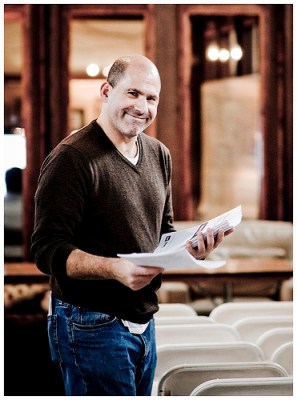Editor’s note: Editor’s note: Mike Hirshland is the founder of Resolute.VC, a seed-stage venture capital firm. Prior to Resolute, he was a General Partner with Polaris Venture Partners where he led the creation of Dogpatch Labs as well as Polaris’s investments in companies including Automattic (WordPress), Quantcast, KISSmetrics and Q1 Labs (IBM). Follow him on his Resolute.VC blog and Twitter.
Back in the “old days” (as in 5 or 10 years ago) the very definition of a seed investment was investing before any product had been built or prototyped. Since then, the ability to build a startup on far less capital has made seed investing less risky. But, oddly, it seems that seed investors have become more risk averse.
With the institutionalization of seed investing has come a conventional wisdom that you need a prototype to raise a seed round. I’ve been thinking about this a ton since launching Resolute.vc, and I disagree. You shouldn’t need a prototype to raise a seed round.
Assume you’re building a consumer/mobile Internet, e-commerce or SaaS product, and your team has product, development, and design chops. You want to raise a $1 million seed that will buy you 18+ months to get a product out, be maniacally focused on learning from what users are and aren’t doing, and either achieve product market fit or not.
What does an investor gain by waiting until you bang out a working prototype? More precisely, what risk is going to be removed from the deal?
In the old days, there often was meaningful technology risk in building a consumer Internet product or enterprise software application, so hitting the first product ship milestone took a meaningful chunk of risk out of the deal. Logically, this substantially changed a deal’s risk/reward profile.
But today, it is the very rare Internet software deal that has meaningful technology risk — other than scalability, and if you have the right founding team you have to bet they are going to figure that out. So the only risk that could be removed from a typical seed deal by shipping a prototype or 1.0 release would be evidence that the company is on to the “right” product that consumers will love.
But does your average investor have strong enough product and design chops to make a call on a product’s ultimate chance for success by seeing a 1.0 product? I don’t think so. Few professional seed investors were previously a superstar product guy or gal. (Yes, there are a couple of exceptions, but just a couple).
Also, and I’d argue more importantly, you’re missing the point of that first product. Rarely is the first product going to have the magic necessary to grab users and draw them in. Rather, it is the first step in a process of understanding your users and learning what it is they really want and need. In many instances, you actually learn along the way that your idea isn’t very good, and that what your users want is another product altogether.
Finally, if you have the right founding team, an investment is based far more on their product experience and/or talent than on what the very first iteration happens to look like.
In a nutshell, your average investor’s positive or negative impression of your prototype or first release will have little or no correlation to your startup’s success or failure. While certainly important to the team for many reasons, that first release just doesn’t remove much (if any) risk from the deal. Yes, a prototype is psychologically comforting for investors (and also helps them answer the “Would I use it?” question), but, for my money, a working prototype shouldn’t be a meaningful seed investment criteria.
Over the course of 2012, Resolute has backed several companies prior to their having a prototype, because we have loved the team and the idea. Generally the total raise and valuation have both been lower than what is currently “market” for the seed stage, but not in all cases.
As the seed stage has become institutionalized by the emergence of seed funds needing a prototype to invest, I’ve started using the term “pre-seed,” which basically is anything that is too early for seed funds. And I expect Resolute.VC to be active at both the seed and pre-seed stage.
